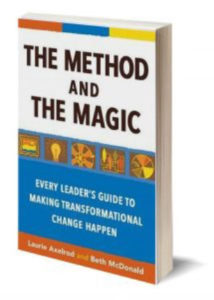 By Janet Andrews, Wheelhouse Group Executive Coach
By Janet Andrews, Wheelhouse Group Executive Coach
Leaders in government and business are all too familiar with that fact that change is constant. However, that awareness doesn’t make keeping up with the pace of change – particularly when you are also trying to implement change – easy. A single factor can cause a slow-down or a milestone miss, whether that factor is organizational, such as a leadership transition, a strategy refresh, or a realignment of priorities; or a shift in some external condition whether political, financial, environmental, societal or technological.
Here are four tips to help you keep momentum:
Be clear about your “North Star”
Staying grounded in the purpose and value of a vision for change helps leaders navigate the different paths that may emerge – or need to be paved – when conditions shift. The more vivid your picture of what success – at its core – looks like, the more likely you can distinguish between what is a “must have” versus a “nice to have” to generate the value of change. This focus will minimize your risk of introducing additional complexity that often causes change to fail – or failing to flex towards a deadline that may now need to change.
Know your stakeholders

In the private sector, executives answer to their board of directors, leadership team, employees, shareholders and customers. In federal service, leaders have a much more complex stakeholder environment—and one inspired by a mission to serve approximately 143 million U.S. taxpayers. Don’t underestimate the amount of time it may take to create engaged stakeholders. We at Wheelhouse use our home grown, systematic approach to identifying critical internal and external stakeholders, which is detailed in our book “The Method and the Magic.”
We focus on four stakeholder categories: Advisors, Champions, Implementers and Impacted Groups. It’s critical to identify each group, determine how a change initiative will affect them, and invite them to the table for dialogue so you are prepared to respond to their challenges and needs. Whether you put pen to paper or use that whiteboard on your wall—mapping your stakeholders is critical to your success.
For a free copy of the book to be sent by mail, click here.
Take time to monitor the prevailing winds of change, from the inside out
In many sectors – particularly, the public sector, leaders need to understand the reasons behind the policies and how to mobilize subject matter experts who can swarm the issue, provide recommendations, and keep a change initiative moving forward. New leaders may be tempted to bring in familiar trusted advisors from outside organizations. While there is value in introducing fresh perspectives into the organization, there is also a need to have insider knowledge—such as landmines that may block change or worm holes that will facilitate change. Building your circle of trusted advisors with institutional knowledge can give appointees and new leaders the organizing skillset to navigate the existing policies, procedures, regulations and organizational structures to implement a change agenda. Get to know the team on the ground, one by one. Dedicate time to building connections and hearing people out. Listen for pain points, risks and wish lists. Pay particular attention to who the influencers are and learn how best to engage them as advisors and advocates.
Assess for change fatigue
We have all seen brilliant visions half-implemented because the implementation took longer than a leader’s tenure, particularly in the case of political appointees who, on average, serve 18 months. Change fatigue or apathy towards change is a very real dynamic. Oftentimes, hearing “we’ve done this before, and it failed,” is viewed as resistance. Challenge yourself to reframe it as an opportunity to explore what conditions are different that might make it successful in the future. Check in with your stakeholders. Assess their change readiness. Connect the proposed changes to the deeper motivators such as delivering on the mission. Then move forward. This sequence is important to consider in developing successful timing and cadence.
